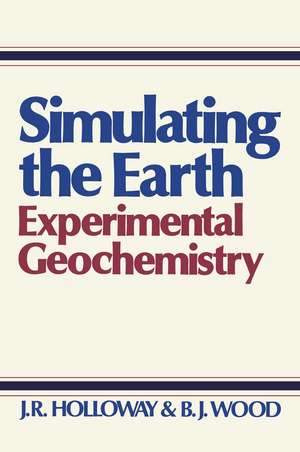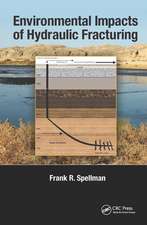Simulating the Earth: Experimental Geochemistry
Autor J.R. Holloway, B.J. Wooden Limba Engleză Paperback – 31 oct 1988
Preț: 383.12 lei
Nou
Puncte Express: 575
Preț estimativ în valută:
73.31€ • 76.75$ • 60.66£
73.31€ • 76.75$ • 60.66£
Carte tipărită la comandă
Livrare economică 07-21 aprilie
Preluare comenzi: 021 569.72.76
Specificații
ISBN-13: 9780044452553
ISBN-10: 0044452551
Pagini: 208
Ilustrații: X, 208 p. 28 illus.
Dimensiuni: 155 x 235 x 11 mm
Greutate: 0.3 kg
Ediția:1988
Editura: SPRINGER NETHERLANDS
Colecția Springer
Locul publicării:Dordrecht, Netherlands
ISBN-10: 0044452551
Pagini: 208
Ilustrații: X, 208 p. 28 illus.
Dimensiuni: 155 x 235 x 11 mm
Greutate: 0.3 kg
Ediția:1988
Editura: SPRINGER NETHERLANDS
Colecția Springer
Locul publicării:Dordrecht, Netherlands
Public țintă
ResearchCuprins
1 The scope.- 1.1 The questions.- 1.2 Experimental philosophy.- 1.3 Conclusions.- 2 The good experiment.- 2.1 Introduction.- 2.2 The conditions.- 2.3 What goes in: starting materials.- 2.4 Measurement imperfections.- 2.5 What comes out: analytical techniques.- 2.6 Conclusions.- 3 The machines.- 3.1 Introduction.- 3.2 Machines for “easy” conditions (atmospheric pressure).- 3.3 Machines for near-surface hydrothermal conditions.- 3.4 Moderate pressure: crust-upper-mantle machines.- 3.5 Ultra-pressure machines.- 3.6 Machines for thermodynamic measurements.- 3.7 Conclusions.- 4 Metamorphic experiments on solid-solid reactions.- 4.1 Introduction.- 4.2 Reactions involving pure phases.- 4.3 Displaced equilibria and activity measurements.- 4.4 Displaced equilibria with two solid solutions.- 4.5 Coexisting solid solutions.- 4.6 Putting it all together.- 5 Metamorphic experiments on solid-fluid reactions.- 5.1 Introduction.- 5.2 Fluid generation and control.- 5.3 Devolatilization experiments.- 5.4 Mineral-fluid interactions.- 6 Just fluids.- 6.1 Objectives.- 6.2 Volumetric measurements: P—V—T.- 6.3 Speciation from solubility.- 6.4 Speciation from spectroscopy.- 6.5 Speciation from electrical conductivity.- 6.6 Conclusions.- 7 Igneous experiments on melts and crystals.- 7.1 Introduction.- 7.2 Atmospheric pressure experiments.- 7.3 Crustal magmas.- 7.4 Experiments at mantle pressures.- 7.5 Trace element behavior.- 7.6 Conclusions.- 8 Igneous experiments on melts and fluids.- 8.1 Introduction.- 8.2 Volatile solubilities in melts.- 8.3 Spectroscopic measurements and speciation methods.- 8.4 Distribution of elements between melts and fluids.- 8.5 Conclusions.- 9 Physical properties of Earth materials.- 9.1 Introduction.- 9.2 Viscosity of silicate melts.- 9.3 Diffusion.- 9.4Crystal growth.- 9.5 Elastic properties.- 9.6 Conclusions.- A.1 Measuring temperature.- A.2 Measuring and generating pressure.- A.3 Controlling oxygen fugacity.- A.4 Materials.- A.5 Preparation of starting materials.- Bibliography/References.
Recenzii
The authors outline the aims of a good experiment, the philosophy of the experimental design, the right equipment and conditions to use for a given project, the problems encountered during experimentation and the pitfalls of data interpretation. Examples are drawn from a welcome range of geological topics, reflecting the wide applicability of modern experimental petrology...Holloway and Wood have produced a text of great clarity which will satisfy a wide audience...It will be a popular teaching text. It deserves also to achieve its aim of swelling the ranks of experimentalist. - Journal of Petrology.














